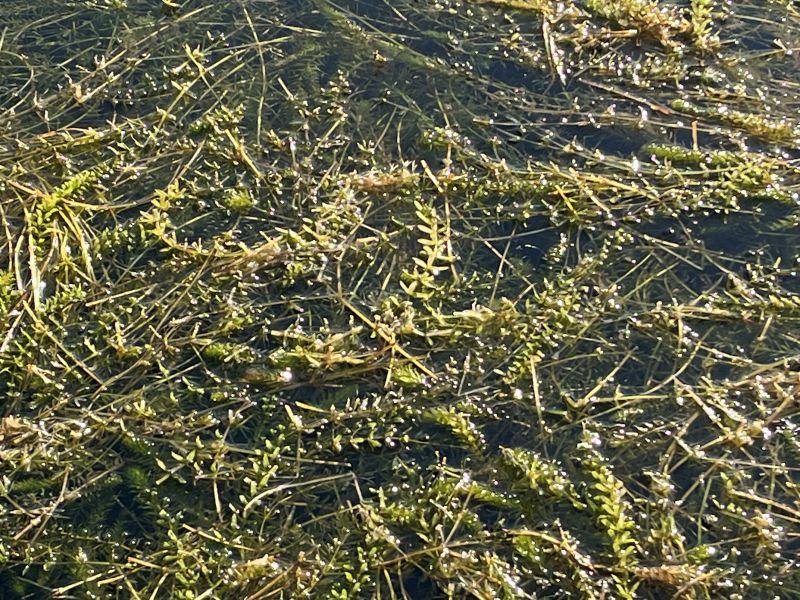City of Austin
FOR IMMEDIATE RELEASERelease Date: Oct. 03, 2025
Contact: Austin Watershed Protection Media Line 512-974-1450 Email

The plant benefits fish and water quality, but can become a problem when it spreads too much.
The City of Austin plans to stock Lake Austin with more sterile grass carp later this fall. Hydrilla, a non-native, invasive plant, is now covering approximately 30% of the lake, up from less than 5% in June.
Grass carp prefer to eat hydrilla and are the most environmentally responsible tool available to manage the plant. A stocking rate of five grass carp per acre of hydrilla should help reduce hydrilla while minimizing the grass carp’s impact on native vegetation.
Texas Parks and Wildlife conducted a survey of vegetation in the lake in September. They found 456 acres of hydrilla. This is approaching the peak of over 500 acres in 2012 and 2013. Currently, the overall vegetation level in the lake is close to 40%. This is near the upper limits of what is recommended to support aquatic life. The target level of vegetation is between 20 and 40%.
It’s important to keep in mind:
- Aquatic vegetation, including hydrilla, can benefit fish and water quality.
- Hydrilla can grow so fast that it becomes a problem for the environment and our community.
- Managing hydrilla is a complicated balancing act that takes time.
Many Lake Austin community members have expressed interest in temporarily lowering the level of the lake to help reduce the amount of hydrilla. While lowering the lake has been effective at controlling Eurasian watermilfoil, another aquatic plant, data suggests it is not effective at controlling hydrilla. In fact, it might encourage the spread of hydrilla. That’s because it would eliminate less problematic aquatic species, which might allow hydrilla to spread more aggressively. Lowering the lake could be useful for the maintenance of structures along the shoreline. No decision has been made.
Hydrilla is an aquatic plant native to Asia that was introduced to the United States in the 1960s and first appeared in Lake Austin in 1999. Austin has learned much over the past 25 years about managing hydrilla. Our goal is to slow down the growth of hydrilla and reduce its density without having a negative impact on the lake’s environment. The lake is an important resource for our whole community, and we are trying to balance everyone’s use and enjoyment of the lake.
Residents and visitors can take the following steps to help prevent the spread of non-native species like hydrilla and zebra mussels:
- Clean, drain, and dry your boat and gear before and after use
- Avoid swimming and boating through dense patches of underwater vegetation
- Don’t toss plant pieces back into the lake. State fines can be up to $2,000 per plant
There is more information on our Plant Life in Austin's Lakes page.
About Austin Watershed Protection
Austin Watershed Protection protects lives, property and the environment of our community by reducing the impact of flooding, erosion, and water pollution. Visit AustinTexas.gov/Watershed to learn more.

